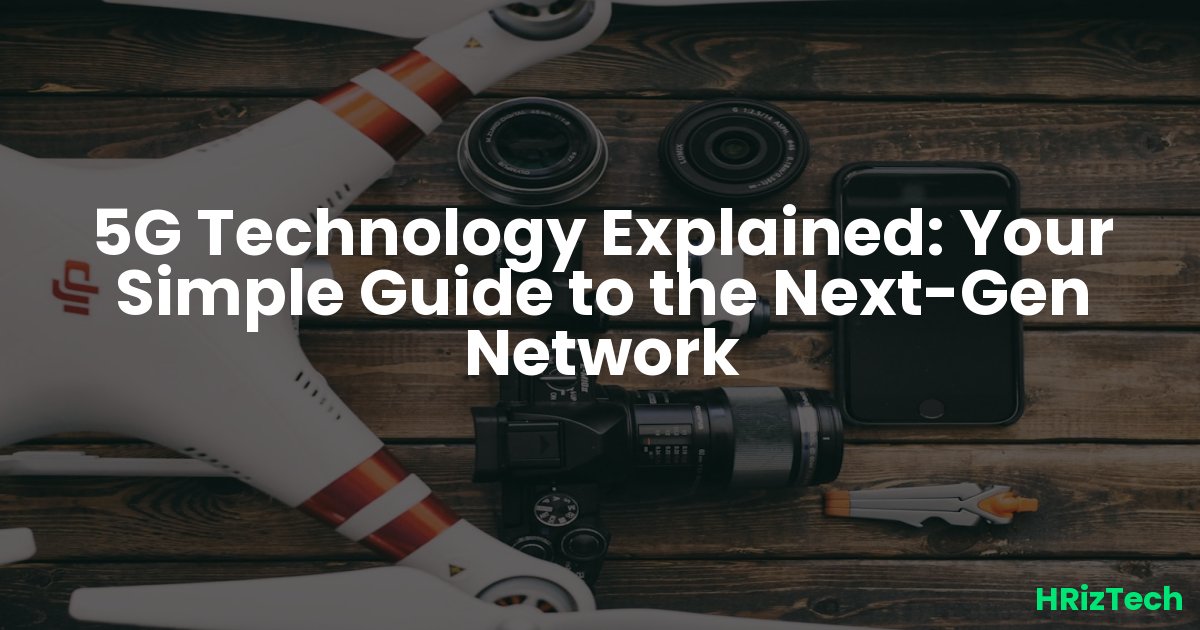5G Technology Explained: Your Simple Guide to the Next-Gen Network

5G Technology Explained: Your Simple Guide to the Next-Gen Network
Ever wondered what the fuss is about 5G? It's not just faster internet; it's a complete revolution in how we connect and interact with the digital world. This guide will break down 5G technology explained in an easy-to-understand way, so you can grasp its potential and impact.
What Exactly *Is* 5G Technology Explained?
5G, or fifth-generation wireless technology, is the latest iteration of cellular network technology. Think of it as a massive upgrade from 4G, offering significantly faster speeds, lower latency (the delay before a transfer of data begins following an instruction for its transfer), and the ability to connect vastly more devices simultaneously. This 5G technology explained simply means a smoother, more reliable, and more powerful internet experience.
How Much Faster is 5G?
The speed difference is dramatic. While 4G offers speeds typically ranging from a few Mbps to several tens of Mbps, 5G promises speeds up to 100 times faster, reaching gigabits per second (Gbps) in some cases. This means downloading a movie in seconds, instead of minutes, and seamless streaming of high-definition video, even on the go.
What are the Benefits of 5G?
The benefits of 5G extend far beyond faster downloads. Think about the implications for:
- Enhanced mobile experiences: Faster downloads, smoother streaming, and improved gaming.
- Smart homes and cities: Seamless integration of IoT devices, improved traffic management, and smarter infrastructure.
- Industrial applications: Remote control of machinery, automation, and improved data collection in factories and other industries.
- Healthcare: Remote surgery, improved telemedicine capabilities, and faster data transfer for medical imaging.
What are the Challenges of 5G?
Despite its promise, 5G rollout faces challenges. One major hurdle is the need for extensive infrastructure upgrades. Building and deploying the necessary cell towers and equipment requires significant investment. There are also concerns about the potential health effects of 5G radiation, although extensive research has largely debunked these concerns.
How Does 5G Technology Compare to Other Networks?
5G is a significant leap forward compared to previous generations. It offers significantly higher speeds, lower latency, and greater capacity, enabling new applications and services that were previously impossible. This table summarizes the key differences:
| Generation | Speed | Latency | Capacity |
|---|---|---|---|
| 4G | Mbps | High | Moderate |
| 5G | Gbps | Low | Very High |
What Does the Future Hold for 5G Technology? What About 6G?
A 2025 Gartner report predicts that 5G will be nearly ubiquitous by 2027, powering a vast array of applications and services. The focus will shift towards perfecting its deployment and addressing challenges like network security. Beyond 5G, research into 6G is already underway, promising even faster speeds and lower latency, potentially opening up entirely new possibilities for communication and data transfer. This includes advancements in AI and cybersecurity which will be critical in managing the increased data flow.
What are your thoughts on the future of 5G and its impact on society?
Furthermore, how do you think 5G will impact your daily life in the coming years?
5G technology explained comprehensively reveals a powerful transformative tool. While challenges remain, the benefits are undeniable. It's shaping the future of connectivity and paving the way for groundbreaking innovations across various sectors. The future is indeed fast approaching.
Comments
No comments yet. Be the first to comment!